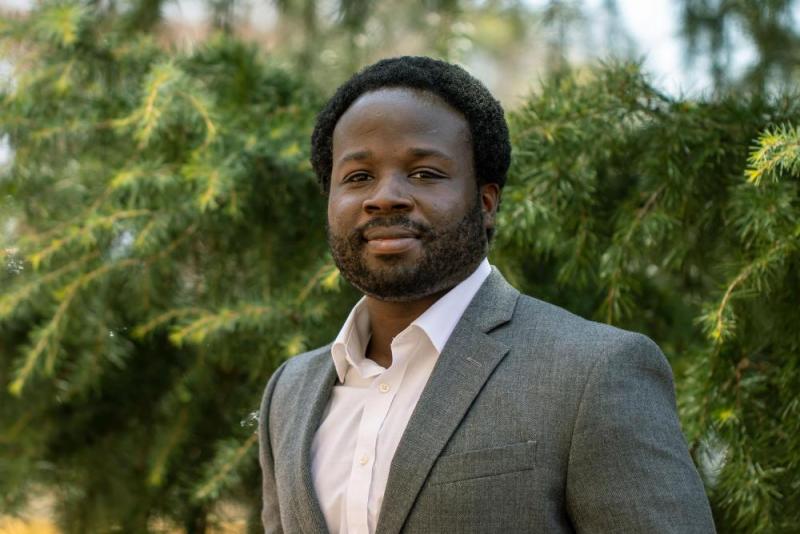UVA Chemist Robert Gilliard’s Research Earns Him a Packard Fellowship

The David and Lucile Packard Foundation earlier this month named University of Virginia chemistry professor Robert J. Gilliard one of 20 Packard Fellows for Science and Engineering.
Gilliard, currently a Dr. Martin Luther King visiting professor at the Massachusetts Institute of Technology, manipulates chemistry to create compounds from fundamental reactions, then seeks practical applications for them.
The Packard Fellowships in Science and Engineering are among the nation’s largest nongovernmental fellowships, designed to allow maximum flexibility in how the funding is used. Since 1988, this program has supported creative thinking of scientists and engineers whose research over time has led to new discoveries that improve people’s lives and enhance humanity’s understanding of the universe.
“To me the Packard Fellowship means freedom – the freedom to explore new and exciting ‘outside-the-box’ ideas,” Gilliard said. “This is also a serious recognition of the work that has been produced by the students and postdocs in my research laboratory.
“The projects we take on are typically very challenging from a synthetic chemistry perspective. We have worked very hard over the last four years and I am glad to see that those efforts are paying off. And what is really exciting is that the best is still yet to come. We are finalizing data for publications on multiple topics.”
As a Packard Fellow, Gilliard will receive $875,000 over five years to finance research.
“I will use these funds to build in areas where we are already working, but we will also expand into research areas that are tangential to our current interest,” Gilliard said. “
In its announcement, the foundation specifically cited Gilliard’s work with redox reactions in chemical synthesis, from the production of new optoelectronic materials and drugs to advancements in catalysis.
“A ‘redox reaction’ is a reaction where a chemical element or metal center changes its electronic state, which we refer to as ‘oxidation state,’” Gilliard said. “These types of reactions are essential for the production of new optical materials, drugs and energy-relevant compounds used in the chemical industry. We proposed to develop new materials, non-traditional ones, with unusual bonding that react with molecular hydrogen and other small molecules. This is in line with our interest in hydrogen-rich molecules as molecular models for hydrogen storage and alternative fuels and other projects on carbon dioxide reduction.”
“We are delighted to once again have a member of the UVA faculty honored as a Packard Fellow,” said Melur “Ram” Ramasubramanian, UVA’s vice president for research. “The recognition for Robert J. Gilliard Jr. is an acknowledgement of the quality and innovation of his research and we look forward to seeing the continued growth and impact of his work.”
While Gilliard will continue his work at UVA, as a visiting scholar at MIT for the fall term he has been expanding his work.
“We have started a collaboration with the Christopher C. Cummins laboratory [at MIT] and those efforts have already led to some interesting results,” Gilliard said. “Kelsie Wentz, a graduate student in my research group at UVA, has led those efforts, working with Martin-Louis Riu and André Eckhardt in the Cummins laboratory at MIT. Essentially, we have combined chemistry from my lab and the Cummins lab to make new boron-phosphorus compounds that may have interesting electronic or optical properties.”
While this is still in the early stages of research, Gilliard brought Wentz, a fifth-year doctoral candidate; Caleb Taylor, third-year doctoral candidate; Akachukwu Obi, a fourth-year doctoral candidate; and Kimberly Hollister, a third-year doctoral candidate – members of his UVA research team – to MIT for several days to work with members of the MIT lab.
Gilliard’s work has attracted a lot of attention. In the past year, he has received a Sloan Research Fellowship, a National Science Foundation CAREER award, and a grant from the Arnold and Mabel Beckman Foundation’s Beckman Young Investigator Program, for his work with temperature-responsive molecules. The National Academy of Sciences also has selected him as a Kavli Fellow, which includes an invitation to participate in the Kavli Frontiers of Science Symposium at the academy’s Beckman Center in Irvine, California in February.
Aside from the research money, the Packard Fellowship also provides Gilliard with an opportunity to confer with other researchers. Packard Fellows hold an annual meeting to discuss their research, where conversations have led to collaborations across disciplines. This year, the annual meeting was held virtually because of COVID-19, with fellows gathered online.
“At a time when we are confronting so many difficult, intertwined challenges, including climate change, a global pandemic and racial injustice, I am buoyed by the determination and energy of these 20 scientists and engineers,” said Nancy Lindborg, Packard Foundation president and chief executive officer. “Through their research, creativity and mentorship to their students and in their labs, these young leaders have the potential to help equip us all to better understand and address the challenges we face.”
“Packard Fellows are shaping the future of research and academia, and the future of our world as we understand it,” said Richard Alley, chair of the Packard Fellowships Advisory Panel and 1991 Packard Fellow. “I look forward to strengthening the bonds within our fantastic community of leading scientists and engineers.”




